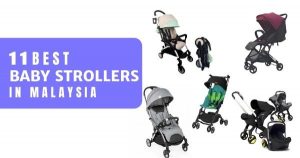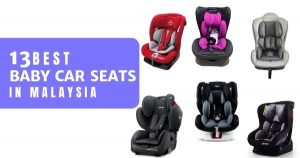Nothing is more important than keeping your child safe! Thus, a baby car seat is an essential for every parent to have in their car!
But how do you go about it when there are so many options to choose from? There is no straightforward answer to this unfortunately.
So we suggest that you read this guide carefully to find out what you need to consider when selecting a car seat that suits your kid’s needs and yours!
How To Select The Right Car Seat For Your Child
Too many parents neglect to get a car seat for their child! If you’re reading this, you’re doing the right thing to protect your baby from harm!
And not just because it’s compulsory (since January 2020) in Malaysia:
To have child restraint systems (CRS) in private vehicles when traveling with children below 135cm (or under 36kg)!
The grace period ended in July 2020. In case you’re wondering!

Note: Exemption for large families with multiple children under 135cm.
1. Car Seat Safety Standards
The lack of a baby car seat basically means your kid does not have any safety restraints.
Normal car seats (and their built-in safety features) are too large for the size of your young child. And will cause serious internal injury in the event of a car crash!
Note: Based on studies by the National Highway Traffic Safety Administration (NHTSA) in the United States.
2. ECE Certified
In Malaysia, you need to look out for products with the orange ECE approved labels.
That means the car seats have met safety requirements under the European safety standard, ECE R44. Or ECE R129.
The labels have the following information:
- E52 – Certification code for Malaysia
- Category (by height or weight) – either Universal or the newer i-Size
- Approval number
- MIROS QR code – that you can scan for more information
Note: There is actually an official guide published by the Malaysian Institute of Road Safety Research (MIROS) if you’re interested in more details! Including installation for different car seats!
3. Types of Car Seats Vs Child Age
The key factors in choosing an appropriate car seat are your kid’s age, weight, and height!
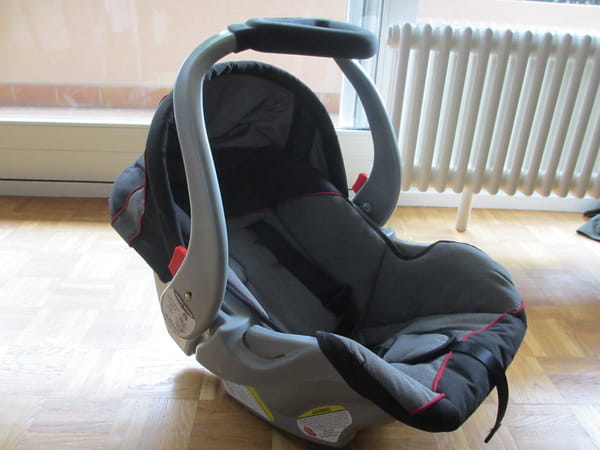
As car seats are made with fixed dimensions for different age groups, much like baby carriers!
- Infant to Toddler: Always a rear-facing car seat. Or a convertible, rear-facing car seat
- Toddler to Kindergartener: Convertible, rear/forward-facing car seat
- Grade-School Children: Booster seat
- Pre-Teens and Older: Seat belt
| Category | Age | Height | Weight | Type Of Car Seat |
|---|---|---|---|---|
| Group 0/0+ | 0 – 18 months | Up to 83cm | Up to 9kg; Recommended Up to 13kg | Rear-facing infant car seat |
| Group 1 | 15 months – 4 years old | 71cm and above | 9kg – 18kg | Front-facing infant car seat |
| Group 2 | 4 – 7 years old | 100cm and above | 15kg – 25kg | Front-facing booster car seat (With 5 points safety harness) |
| Group 3 | 6 years old and above | Up to 135cm | 22kg – 36kg | Front-facing booster car seat (Used with a seatbelt) |

Note: It is recommended that all groups except Group 3 use a 5-point safety harness!
4. Size Of The Car Seat
The seat must also be able to fit in your car! And if your car is a post-2015 model, the baby car seat should be ISOFIX-compatible for easier installation.
Check your car’s manual on the location of the ISOFIX latches (if any).
And don’t forget to cross-check the dimensions of any product against the rear passenger seats in your car! Including height!
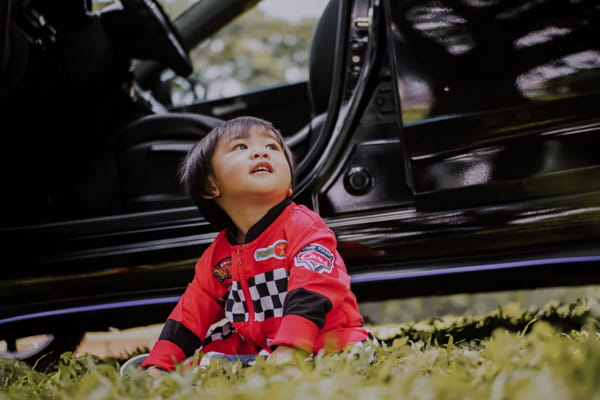
5. Other Features
These are some of the features you can also take note of:
- Washable covers – sometimes, even the best diapers can leak!
- Portability – the car seat has to be light enough for you to carry to and from your car as needed
- Soft padding that won’t scratch your baby
- Rockable –helps to soothe your baby to sleep
6. Used Car Seats
What about secondhand car seats? Are they safe to buy?
It might be tempting to save a few hundred Ringgit buying a secondhand car seat. As these can be much cheaper compared to brand new car seats that cost RM200 and above.
But:
Car seats do have an expiry date for when they are no longer able to do their job effectively!
And if you buy a preloved baby car seat, you may not know their true history (e.g. past accidents, prolonged sun exposure, missing parts, previous product recall, etc).
An exception would be if you get the car seat from a trusted source (e.g. a family member or friend). Additionally, it should also still have a new safety label and adequate time left before the expiry date!
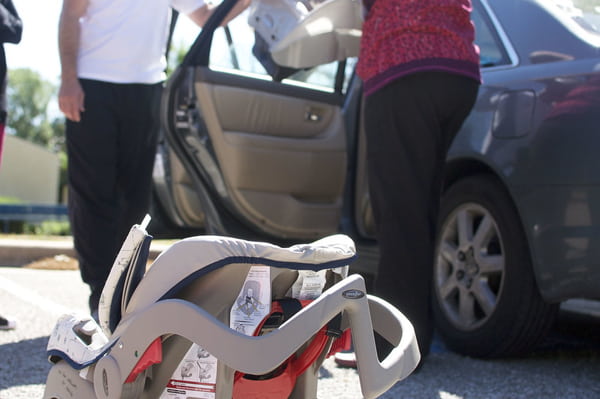
Car Seat Safety & Precautions
It’s not enough to get a car seat! You have to make sure you use it correctly too!
- Avoid fixing the child’s car seat in the front passenger seat (beside the driver) unless you can deactivate the airbag
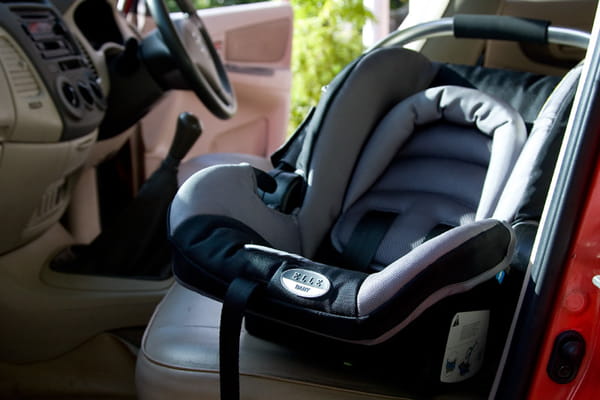
- If no one will be sitting in the rear passenger seats, fix the child car seat to the middle (if the design allows). This helps to avoid any potential accidents with the doors.
- Read the given instructions on how to properly install the car seat. Follow the recommended reclining angle!

- The base of the car seat must not be able to move more than an inch in any direction after installing it
- There should be no slack in the harness across your child’s chest or hips
- Don’t change your child’s seat to face forward or switch to a booster seat or safety belt until they reach the next age group!
- Forward-facing seats usually require a top tether
- Harness should be just below the shoulders for rear-facing Or just above for forward-facing seats
- Chest clip of a harness should be at armpit level
- You may want to add cushions and covers to make your child more comfortable but this is inadvisable! Unless they have been crash-tested too!
- For boosters, the lap belt should be across the hips. Rather than the belly or rib cage level.

- If you need to, set a reminder so you don’t forget when it’s time to switch to a bigger car seat, booster seat, or safety belt!
Conclusion
We hope this guide supplies you with the knowledge (and confidence) to pick a baby car seat that is right for your family!
If you can, it’s always advisable to bring your kid to try the physical car seat before making a purchase!
Do check out our baby car seat recommendations.


